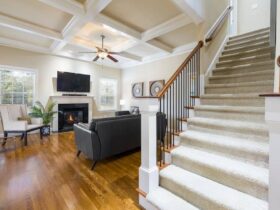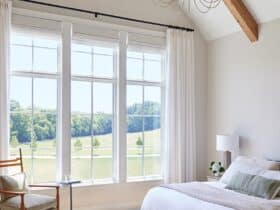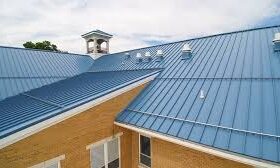Deciding what type of roofing system to install requires balancing functionality and value for money. As it’s such a significant investment, it’s no wonder that lifespan is a critical consideration for many property owners facing a roof replacement or new build.
In recent years, many homeowners have been switching to flat roofs. Here are the pros and cons of making that choice, so you can determine whether it’s right for you.
Pro: Affordable
The main benefit of a flat roof system is that they’re affordable. According to the experts at https://commercialroofinggreenville.com/, this is the primary reason why commercial property owners opt for a flat roof. As such, it’s no surprise that homeowners are embracing this roofing system as well.
The primary reason why these roofing systems are more affordable are the materials used. Additionally, the installation process is quicker and safer, significantly cutting labor costs compared to a sloped roof installation.
Keep in mind that affordability is only an advantage if you’re building a home, not converting an existing pitched roof to a flat roof. This process is tedious and requires major structural changes.
Cons: Not Aesthetically Pleasing
One reason homeowners are hesitant to invest in a flat roof is that they aren’t as aesthetically pleasing as sloped roofs. While a flat roof offers an ultra-modern look on new builds, it can be challenging to overcome the idea that a home should have a traditional roof.
Even if you like the look of a flat roof, it’s essential to consider the resale value and curb appeal when it’s time to sell. Additionally, as you won’t have an attic, some of your ventilation systems may require external elements, detracting from the aesthetic further.
Pro: Functional Space
Having a flat roof can expand your functional living space, especially if you have a small yard. Many homeowners improve their insulation by planting a rooftop garden and sitting area participating in the green roof movement. This feature can also help absorb excess water to prevent pooling.
If you decide to create a functional space on your roof, work with a contractor to understand load limits and ensure all upgrades are safe and up to code.
Con: Not Ideal for Extreme Climates
Flat roofs are great in moderate climates with consistent weather. If you live in a place that’s prone to extreme heat or cold, a flat roof isn’t the best option. During the winter, snow will accumulate. As there won’t be insulation in an attic, it can also be difficult to control the temperature inside your home during periods of extreme heat and cold.
Pro: Easier to Maintain
Flat roofs are naturally easier to maintain, as it’s safer to conduct regular inspections and make repairs. Rather than needing specialty equipment and harnesses, you can safely walk on the roof and do work as needed.
This aspect of a flat roof also means that you can take a more DIY approach to repairs rather than always hiring a roofing professional. However, it’s integral to know when to handle something yourself and when a professional hand is needed.
Con: Require More Maintenance
Although it’s easier to conduct maintenance on a flat roof, they tend to require more care and attention than a sloped roof. During the winter months, you’ll need to go and clear off snow, as it won’t naturally slide away. During rainy months, you’ll need to ensure water isn’t pooling and creating the risk of leaks.
Without proper maintenance, a flat roof will have a significantly shorter lifespan than a sloped roof. At this point, the upfront cost savings may not be worth the diminished return on investment.
Flat roofs are more popular on commercial buildings, but they have merit for residential dwellings as well. Consider these pros and cons of flat roofing systems, and consult with a roofing expert to see if this option is best for your home.












